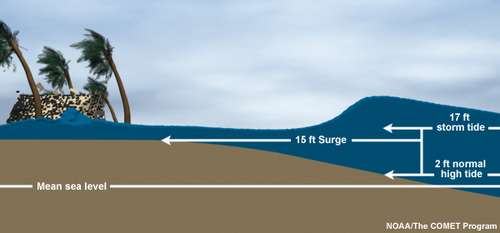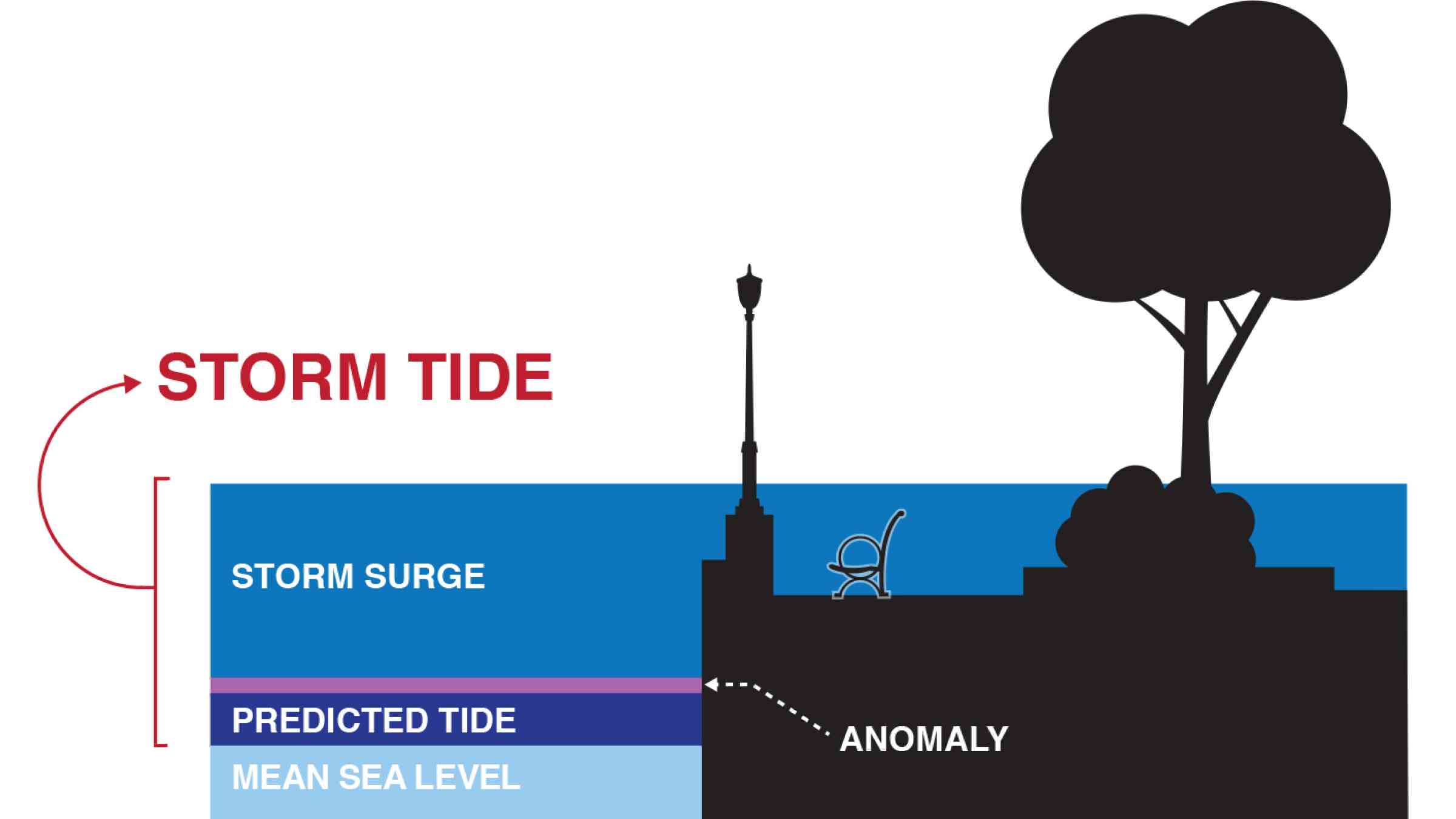Storm Surge
Primary reference(s)
WMO, 2008. Technical Regulations, Volume III: Hydrology, WMO No. 49. World Meteorological Organization (WMO). Accessed 26 November 2019.
WMO, 2011. Guide to Storm Surge Forecasting, WMO No. 1076. World Meteorological Organization (WMO). Accessed 12 August 2020.
WMO, 2017. Regional Association IV – Hurricane Operational Plan for North America, Central America and the Caribbean, WMO-No. 1163. World Meteorological Organization (WMO). Accessed 26 November 2019.
Additional scientific description
A storm surge is the rise in seawater level caused solely by a storm. It is the abnormal rise in seawater level during a storm, measured as the height of the water above the normal predicted astronomical tide. The surge is caused primarily by a storm’s winds pushing water onshore. The amplitude of the storm surge at any given location depends on the orientation of the coastline with the storm track, the intensity, size, and speed of the storm, and the local bathymetry (NOAA, 2019a).
This is illustrated in the graphic below (NOAA, 2019a). A storm tide is the water level that results from the combination of the storm surge and the normal (astronomical) tide. A 3-metre (9.8 feet) storm surge on top of a high tide that is 2 metres (6.6 feet) above the mean sea level will produce a storm tide that is 5 metres (16.4 feet) above mean sea level. Storm surge should not be confused with storm tide. This rise in water level can cause extreme flooding in coastal areas, resulting from storm tides reaching up to 6 meters (20 feet) or more in some cases (NOAA, 2019b).

Metrics and numeric limits
Not available.
Key relevant UN convention / multilateral treaty
Not available.
Examples of drivers, outcomes and risk management
On top of a storm tide are pounding waves generated by the powerful winds. The area of seawater flooding may extend along the coast for over 100 km, with water pushing several kilometres inland if the land is low lying. The combined effects of the storm tide and surface waves can destroy buildings, wash away roads and run ships aground (Australian Government, 2020).
Examples of National Alerting Parameters include storm surge warning issued in Canada (Government of Canada, 2019) and an Advisory for storm surge watch/warning issued by the World Meteorological Organization (WMO, 2017).

References
Australian Government, 2020. Storm Surge. Bureau of Meteorology. Accessed 13 October 2020.
Government of Canada, 2019. Storm Surge: Criteria for Public Weather Alerts. Accessed 26 November 2019.
NOAA, 2019a. What is storm surge? National Ocean Service, National Oceanic and Atmospheric Administration (NOAA). Accessed 26 November 2019.
WMO, 2017. Regional Association IV – Hurricane Operational Plan for North America, Central America and the Caribbean, WMO-No. 1163. World Meteorological Organization (WMO). Accessed 26 November 2019.